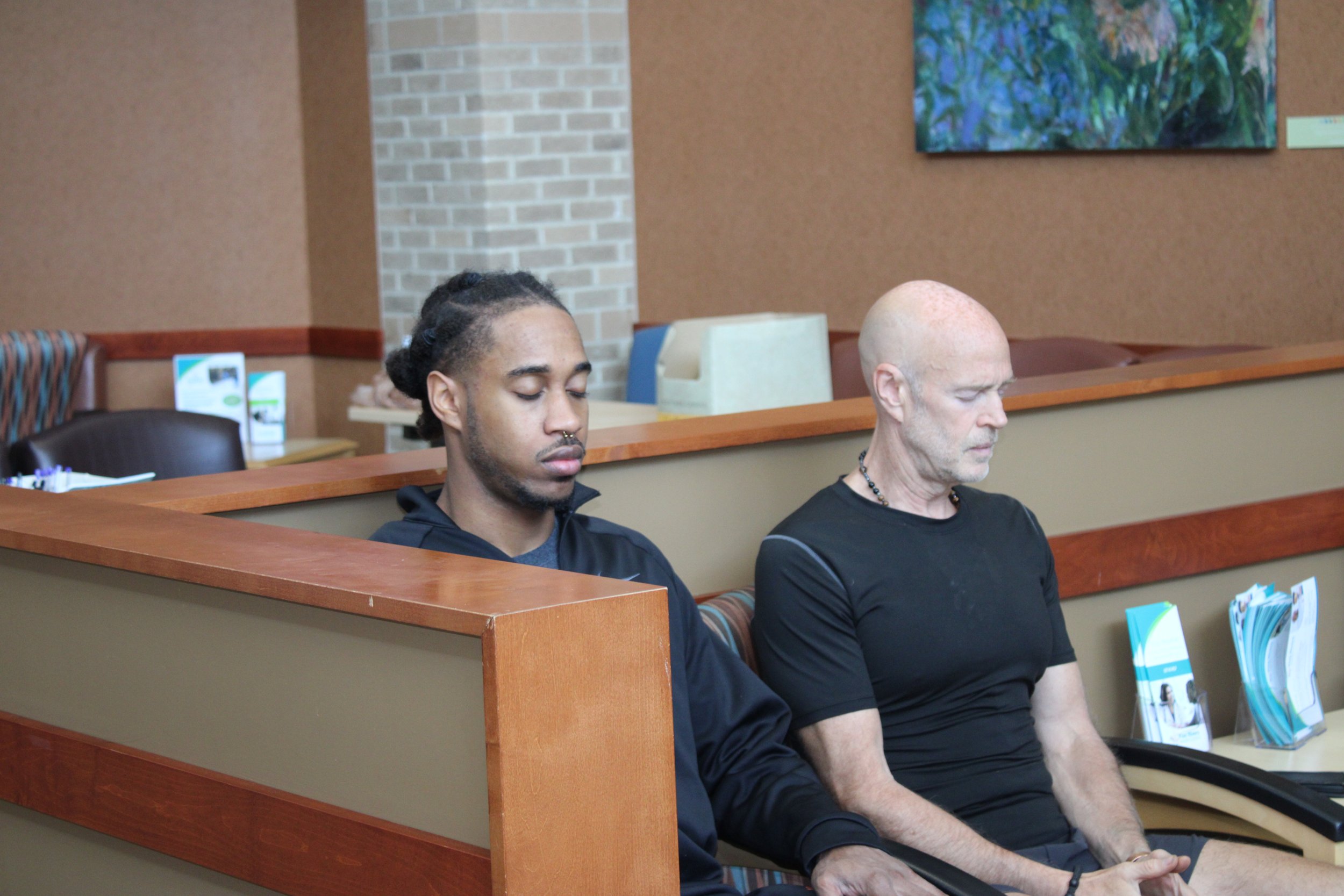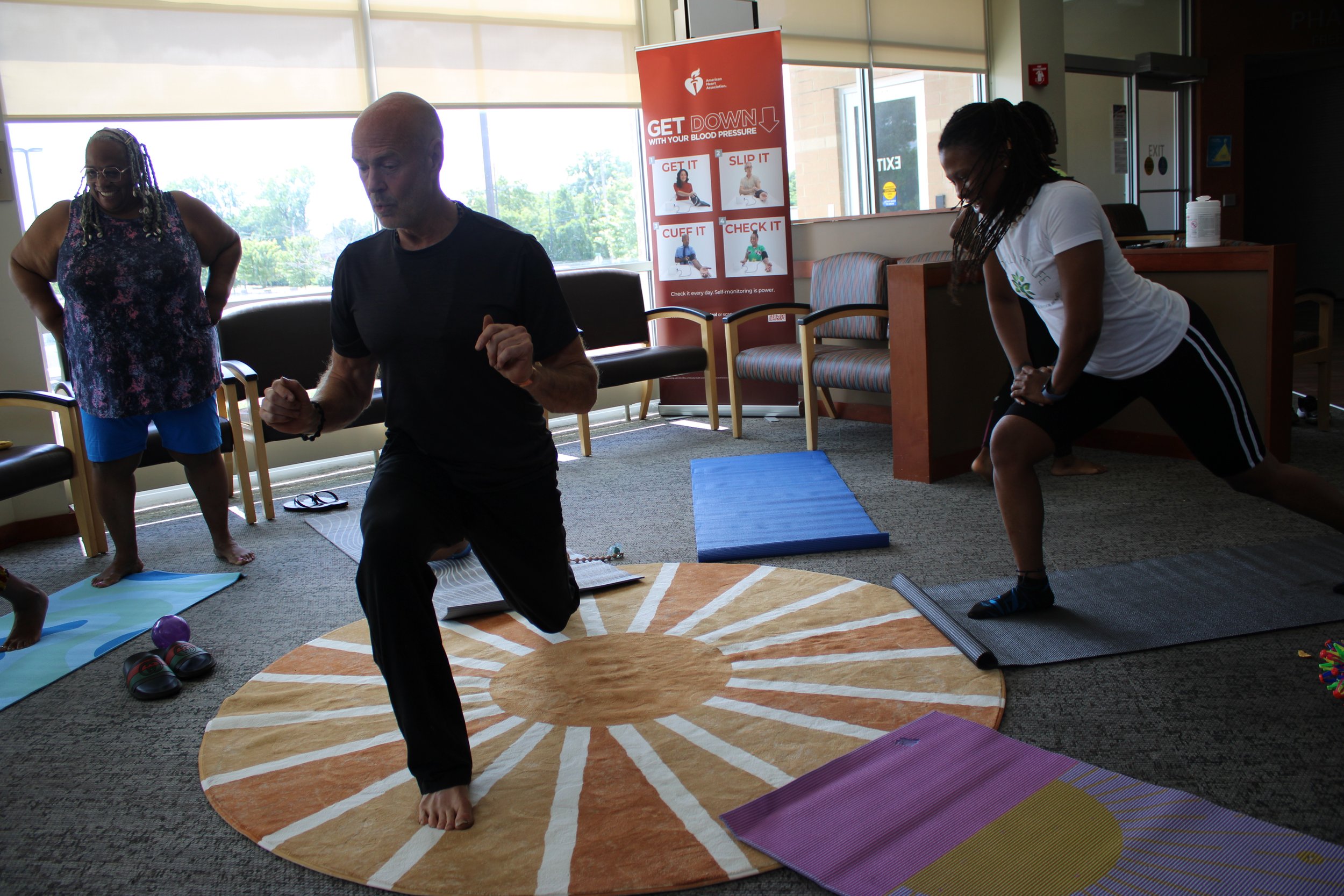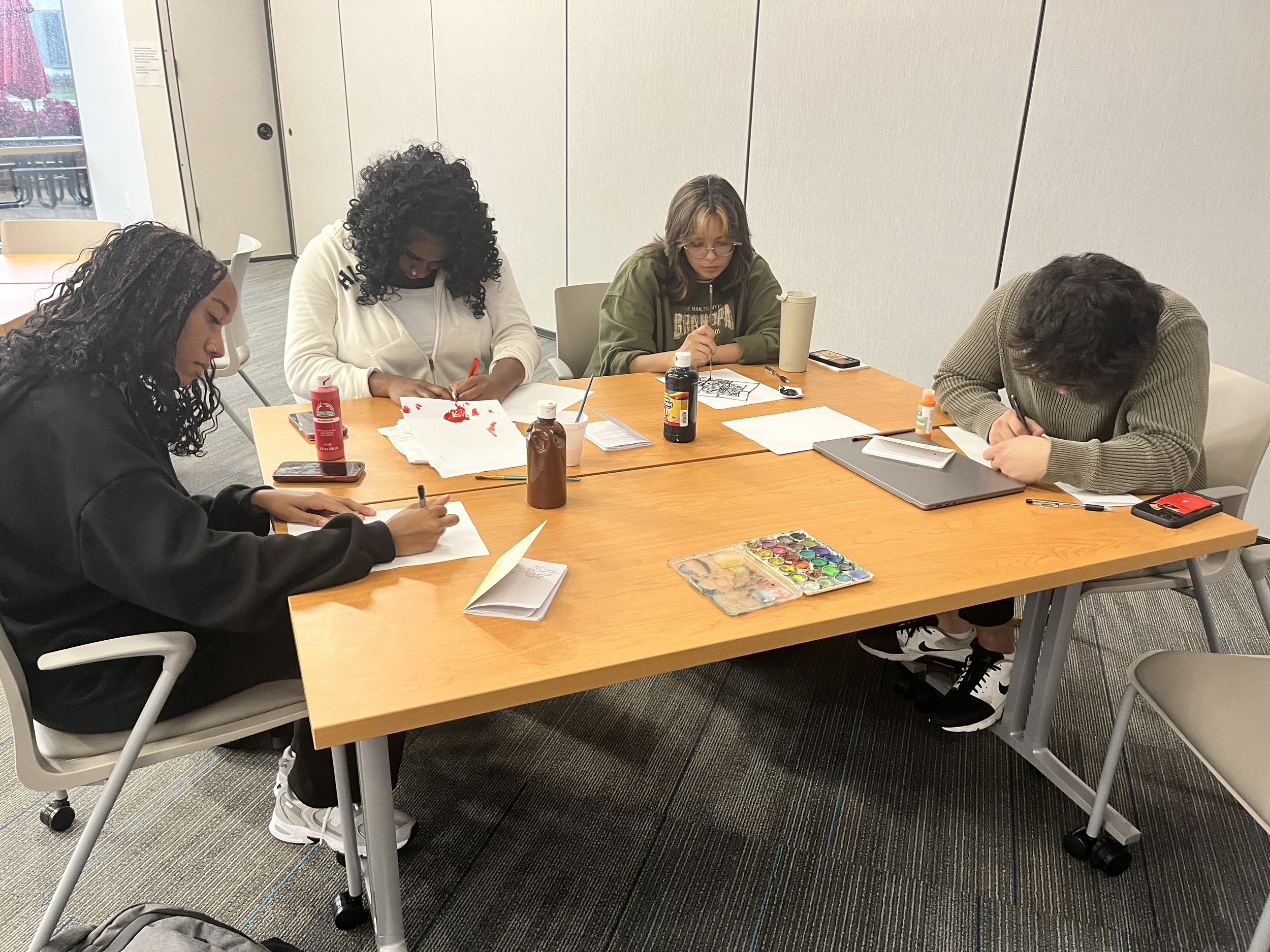“Mindfulness isn’t about getting anywhere. It’s about being where you are.”
— Jon Kabat-Zinn
Mindfulness/Meditation
-
Definition
Mindfulness is practicing paying full attention to the present moment without judgment. It involves being aware of your thoughts, feelings, bodily sensations, and the environment around you without becoming overwhelmed or reactive.
Meditation is a structured practice that often incorporates mindfulness but can also involve techniques such as focusing on the breath, visualizations, or mantras to quiet the mind and cultivate deep concentration, awareness, or relaxation.
Benefits
Reduces Stress
Improves Mental Health
Increases Focus and Attention
Promotes Overall Well-Being and Happiness
Practice
Meditation can be a formal practice (like sitting in stillness for a set period) or integrated into daily life (such as mindful walking or eating).
-
Restorative Circles
-
Definitions
Restorative Circles are a structured, community-based approach to addressing harm, conflicts, and relationships. The primary aim is to foster communication, understanding, healing, and accountability in a safe and respectful environment.
Benefits
Encourages Healing and Reconciliation
Encourages Accountability and Responsibility
Strengths Community and Social Connections
Fosters Emotional Expression and Empathy
Promotes Inclusion and Equity
Practice
The circle format involves participants sitting in a circle, with a talking piece (an object passed around to indicate whose turn it is to speak), which ensures that everyone has an equal opportunity to speak and be heard. A trained facilitator often guides the circle, creating a supportive space for participants to share their feelings, experiences, and perspectives regarding a particular issue or conflict.
-
Fitness
-
Definition
Fitness refers to an individual's overall physical health and well-being, particularly their ability to perform various physical activities.
Benefits
Enhances Mental Health
Improves Cardiovascular Health
Helps with Weight Management
Builds and Maintains Muscular Strength
Boosts Energy and Reduces Fatigue
Supports Immune Function
Practice
Fitness is achieved and maintained through regular physical activity, including exercises like aerobic workouts (e.g., running, cycling), strength training, flexibility exercises (e.g., yoga), and activities that improve balance and coordination.
-
Art Therapy
-
Definition
Art therapy is a therapeutic practice that uses creative processes, such as drawing, painting, sculpture, and other artistic expression, to help individuals explore their emotions, manage stress, and improve mental and emotional well-being.
Benefits
Enhances Emotional Expression
Reduces Stress and Anxiety
Supports Healing from Trauma
Increases Self-Awareness
Enhances Social and Interpersonal Skills
Improves Cognitive Functions
Practice
Art therapy is typically led by a trained art therapist who helps guide clients in the creative process while providing a supportive environment for self-exploration and healing. While the focus is not on artistic skill or talent, the therapeutic use of art can enable individuals to express complex emotions, uncover subconscious thoughts, and promote self-awareness.
-
Creative Writing
-
Definition
Creative writing is a form of writing that emphasizes imagination, self-expression, and storytelling, as opposed to purely factual or technical writing. It involves the creation of original works that may include a wide range of genres, such as fiction, poetry, plays, screenplays, memoirs, and essays. Creative writing focuses on artistic expression, with the writer using their creativity to develop characters, plots, themes, and language in ways that engage the reader's emotions, thoughts, and senses.
Benefits
Enhances Self-Expression
Boost Mental Health and Emotional Well-Being
Enhances Cognitive Functions
Promotes Personal Growth and Confidence
Promotes Relaxation and Mindfulness
Practice
Creative writing is not constrained by rules of grammar or structure to the same extent as other types of writing (e.g., academic or business writing). It allows the freedom to explore and experiment with language, style, and form, allowing writers to break conventions and discover unique ways to express themselves.
-
Sound Healing
-
Definition
Sound healing (also known as sound therapy or sound medicine) is a therapeutic practice that uses specific sound frequencies, vibrations, and musical tones to promote physical, emotional, and spiritual well-being. This practice is based on the idea that everything in the universe, including the human body, vibrates at certain frequencies. When these frequencies are disrupted or out of balance, it can lead to physical or emotional discomfort. Sound healing seeks to restore harmony and balance to the body by using sound to influence these vibrational frequencies.
Benefits
Reduces Stress and Anxiety
Enhances Emotional Healing
Improves Sleep
Enhances Focus and Mental Clarity
Promotes Spiritual Growth
Practice
Sound healing can be applied in various forms, from one-on-one therapy sessions with a trained practitioner to group sound baths, where participants lie down and are immersed in a series of harmonious sounds. The goal is to facilitate relaxation, reduce stress, and encourage the body’s natural healing processes.
-






